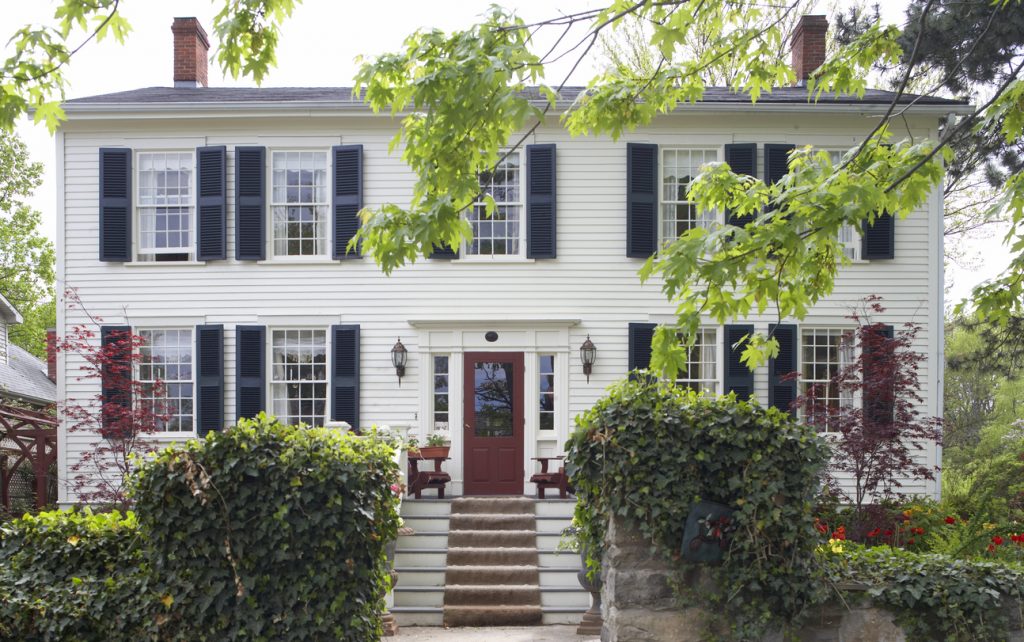By Brentnie Daggett
There are many benefits to purchasing an older home—you'll get character, and could pay a lower price upfront. You may even see potential to renovate an older home into the modern, beautiful home of your dreams.
Related: How to Remodel and Preserve Old Homes
Before you take the plunge and put a down payment on an older home, however, there are some specific things you should look for during the inspection process:
Check for electrical issues.
Older structures may boast walls filled with history, but they also tend to have ancient wiring and electrical panels. The electrical systems in older homes often weren't designed to keep up with the amount of electricity typical homeowners consume today. Be sure that everything is up to code, and don't just assume that the previous owners updated things the way they were supposed to. Insulation on old wiring can start to wear and becomes a safety hazard. It's a smart idea to have an electrician inspect the building before you close on the purchase. Rewiring an entire home can be extremely expensive and will probably make that low purchase price a little less tempting.
Make sure HVAC systems are efficient.
Take the time to bring in an expert to inspect the home's HVAC system, including any air conditioning or furnaces. Many older homes don't have any air conditioning systems in place, so consider if this is something that's important to you. If the home utilizes a furnace, make sure it's in safe and effective working condition and won't need to be replaced anytime soon. Consult a professional about any plans you have to bring in new heating/cooling units and which would work best in terms of upfront cost and long-term savings.
Ask the age of the roof.
Roofs need to be replaced every 10-20 years, depending on the quality of the materials used and the workmanship. Find out when the roof was last replaced and exactly how it was done—some homeowners try to save money by adding new shingles on top of the old roof, which is not the best way to replace an entire roof.
You'll also want to survey the roof for any issues that may need repair. Are there loose shingles or leaks that'll need to be addressed immediately? Note the pitch of the roof and the types of materials used. A composite shingle roof will cost less to replace than a clay tile or slate roof. The pitch of the roof can also drive up costs—a roof that is particularly steep may be challenging to replace and repair.
Pay attention to the foundation.
The entire house sits on the foundation, so it's important to address any issues head-on to keep the property safe and livable. Older homes may have foundations that are cracked, uneven, sunken or have been damaged over time and need repair. Bring in a structural engineer to closely inspect the foundation; these kinds of issues are one of the costliest repairs and aren't always fixable in extreme cases.
Test for lead paint.
Always ask to test for lead paint in older homes. Exposure to lead can cause a long list of negative health effects and is particularly dangerous to children and pregnant women. Lead paint was banned in the U.S. in 1978, so if the home was built before then, there's a higher chance that lead paint was used. The older the home, the more likely lead paint is present—some 87 percent of homes built before 1940 contain lead-based paint.
Consider the plumbing.
Knowing which materials were used to build plumbing for the home and connect it to the sewer will help you figure out if there are any potential issues. Assuming the original systems haven't been replaced, you can often look into the most common plumbing used for different decades depending on when your home was built. For example, in the 1950s, plumbing was often built using clay lines, which tend to corrode and crack. In the 1980s, many plumbing systems were built using polybutylene (PB) piping, which degrades at a rapid rate and can lead to burst pipes. Don't be afraid to turn to a professional for their opinion.
Plan for upgrades.
No matter what the condition of an older home, plan for upgrades in the coming years. If there are no major issues that need your immediate attention, it's safe to assume there will be smaller repairs that come up as time goes on.
Purchasing an older home can be an exciting and enticing opportunity, but it's important to understand exactly what you're buying. Do your due diligence and make sure to have the home inspected by an inspector who has experience with older houses. Carefully review all the facts and consider any hidden costs when purchasing an older home. Constantly spending money on repairs and home improvement projects can easily cost you more money than the purchase price of a newer home in the long run.
 Brentnie Daggett is a writer and infographic master for the rental and property management industry. She loves to share tips and tricks to assist landlords and renters alike. To learn more about Daggett, and to discover more great tips for renters, visit www.rentecdirect.com.
Brentnie Daggett is a writer and infographic master for the rental and property management industry. She loves to share tips and tricks to assist landlords and renters alike. To learn more about Daggett, and to discover more great tips for renters, visit www.rentecdirect.com.









Howdy! I could have sworn I’ve been to this web site before
but after looking at many of the articles I realized it’s new to me.
Anyhow, I’m certainly delighted I stumbled upon it and I’ll be bookmarking it and checking back
often!